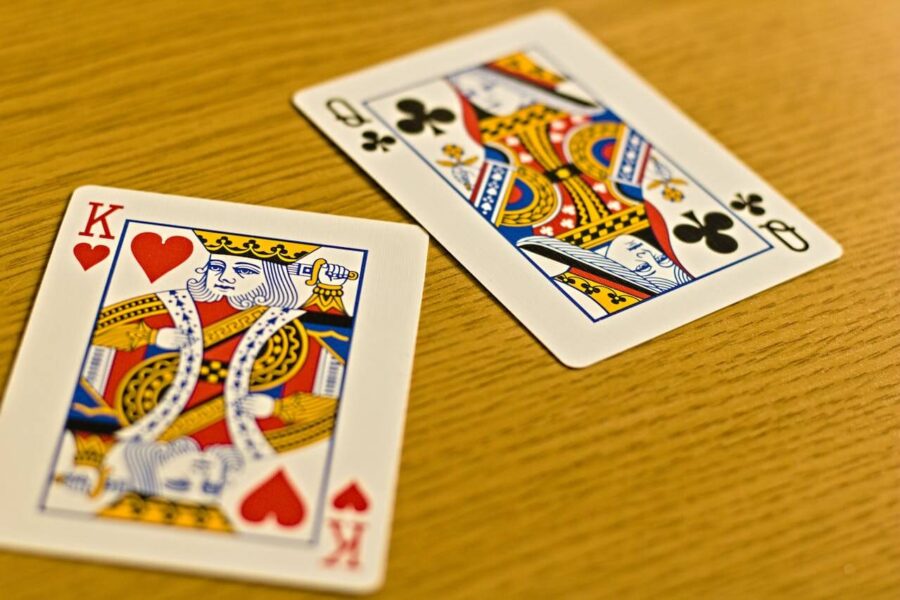
Faro Table Game: Rules, Strategy, and Historical Insights

Faro, an intriguing faro table game, has captivated players with its rich history and strategic depth. Emerging during a time when card games were a staple of aristocratic entertainment, Faro has roots that trace back to ancient cultures. This historical card game not only reflects the gambling ethos of its era but also showcases how gaming evolves alongside societal trends. With its blend of chance and strategy, the faro table offers an engaging experience for both novice players and seasoned gamblers alike.
As a popular pastime across Europe and later in America, the faro table game earned its reputation through its unique rules and betting mechanics. Understanding the intricacies of the game can significantly enhance a player's chances of success. This article delves into the faro table, exploring its historical significance, gameplay mechanics, and strategies that can lead to victory. Whether you're looking to learn the basics or master advanced techniques, the faro table game promises a captivating adventure into gaming history.
- Overview of Faro: A Historical Card Game
- The Introduction of Faro to America: New Orleans and Beyond
- Gameplay Mechanics: Understanding the Rules of Faro
- Stuss: The Domestic Variant of Faro
- Strategies for Winning at Faro: Tips and Techniques
- Faro's Decline: Factors Leading to Its Decrease in Popularity
- Faro in Modern Casinos: A Remnant of Gaming History
- Conclusion: The Legacy of Faro in Card Playing Culture
Overview of Faro: A Historical Card Game
The faro table game is a card game that has occupied a notable space in gambling history. It gained popularity in the gambling halls of Europe during the 17th and 18th centuries. Known for its relatively simple rules, Faro became a beloved game among the aristocracy. Players would place bets on various outcomes as cards were drawn from a shuffled deck. The structure of the game revolves around its faro table, which displays the ranks of cards players can bet on.
The Origins of Faro: From Pharaohs to Gaming Tables
The origins of Faro can be traced back to ancient Egypt, where the pharaoh, a symbol of power and authority, played a crucial role in the game's early narrative. The name "Faro" itself is derived from the image of the pharaoh depicted on early French playing cards. Its connection to the ruling elite cemented Faro’s status as a game for the wealthy and powerful. Over the centuries, the game transformed, transitioning from its Egyptian roots to become a staple in the European gambling scene.
Faro's Popularity in Europe: A Game for Aristocrats
As the faro table game spread throughout Europe, it became synonymous with high-stakes gambling and lavish events. The game's appeal lay not only in its simplicity but also in the allure it held for those seeking fortune and excitement. Aristocrats would frequent smoky gaming halls, where the atmosphere was electric with anticipation and the clash of cards. The faro table was a central gathering point, drawing players eager to test their luck and skill against one another.
The Introduction of Faro to America: New Orleans and Beyond
The migration of Faro to America marked a new chapter in its storied history. New Orleans, with its vibrant culture and rich gambling tradition, became the epicenter for the faro table game in the United States. The city's unique melange of French, Spanish, and African influences fostered an environment ripe for card games. Faro quickly gained popularity in gaming houses, where players flocked to try their luck at the faro table.
Through the early 20th century, Faro spread across America, appearing in saloons and gambling dens from the Mississippi River to the Pacific Coast. Its easy-to-understand rules and fast-paced gameplay made it a favorite among gamblers of all backgrounds. However, as regulations around gambling tightened and other games emerged, the faro table game began to face challenges that would eventually lead to its decline.
Gameplay Mechanics: Understanding the Rules of Faro
To truly appreciate the faro table game, one must first understand its rules and gameplay mechanics. Faro is traditionally played with a single deck of cards that is shuffled before the game begins. The faro table features a layout that displays the thirteen ranks of cards, from Ace to King, allowing players to place bets on any of these ranks.
Betting in Faro: How to Place Your Bets
Players can place bets on the ranks they believe will win as cards are drawn from the deck. Bets can be either on a single rank or multiple ranks, depending on the player’s strategy. Winning bets occur when the drawn card matches the rank on which the player has wagered. The payout is typically 1:1, although winning on a card ranked randomly can sometimes offer different odds, leading to more strategic betting by players.
The Unique Split Rule: What You Need to Know
One of the standout features of the faro table game is the unique split rule. If two cards of the same rank are drawn, the house takes half of all bets placed on that rank, known as a split. This rule serves as both a deterrent and an element of strategy, as players must consider the risk of the split when placing their bets. Being aware of this rule helps players adapt their strategies accordingly while engaging in the game.
Stuss: The Domestic Variant of Faro
In addition to traditional Faro, there exists a domestic variant known as Stuss. This version of the faro table game alters some gameplay mechanics. In Stuss, cards are dealt from the dealer’s hand instead of a shuffled deck, resulting in a different dynamic for players. The house takes all bets if a split occurs in Stuss, which creates an additional layer of strategy and decision-making for players.
Strategies for Winning at Faro: Tips and Techniques
Mastering the faro table game requires a blend of luck and strategy. While the element of chance is inherent in gambling, players can employ certain techniques to enhance their odds. For example, focusing on consistent betting on a particular rank may yield favorable outcomes over time. Additionally, managing one's bankroll effectively and understanding when to walk away can also contribute to a successful gaming experience.
Faro's Decline: Factors Leading to Its Decrease in Popularity
Though Faro began its journey as a cherished game among the elite, various factors contributed to its decline by the mid-20th century. Changes in gambling laws and the emergence of new games with more appealing mechanics led to a gradual waning of interest in the faro table game. Moreover, the rise of casinos and regulated gambling shifted focus away from traditional card games like Faro.
Faro in Modern Casinos: A Remnant of Gaming History
Despite its decline, remnants of the faro table game continue to exist in certain casinos, particularly in Nevada. These casinos often feature the game as part of their historical gaming collections, offering players a glimpse into the past. While Faro may not be as widely played as it once was, its legacy remains a significant part of the broader narrative of gambling and card playing culture.
Conclusion: The Legacy of Faro in Card Playing Culture
The faro table game stands as a testament to the evolution of card games throughout history. From its origins as a game for pharaohs to a favorite among aristocrats and a staple in American gaming rooms, Faro's journey reflects changing societal values and the ongoing allure of gambling. Today, it continues to capture the imaginations of those who seek the thrill of the faro table experience.
In conclusion, studying the faro table game offers valuable insights into card playing culture and its historical significance. Whether you are a seasoned player or new to Faro, the game encompasses a rich tapestry of strategy, chance, and excitement that remains relevant in the world of gaming today.
Did you find this article helpful? Faro Table Game: Rules, Strategy, and Historical Insights See more here Education.
Leave a Reply






Related posts